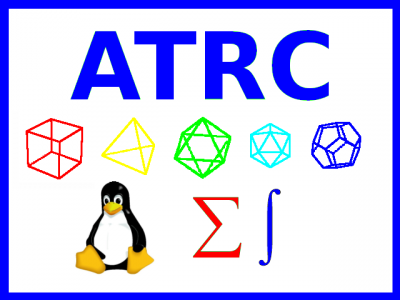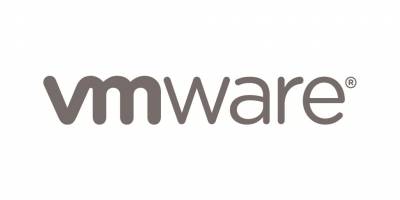VMware Course
Date : 5 October 2022
By : Khawar Nehal (khawar@atrc.net.pk)
Course Description:
This five-day course features intensive hands-on training that focuses on installing, configuring, and managing VMware vSphere® 7, which includes VMware ESXi™ 7 and VMware vCenter Server® 7. This course prepares you to administer a vSphere infrastructure for an organization of any size.
This course is the foundation for most of the other VMware technologies in the software-defined data center.
Product Alignment
VMware ESXi 7.0
VMware vCenter Server 7.0
Objectives
By the end of the course, you should be able to meet the following objectives:
Describe the software-defined data center (SDDC)
Explain the vSphere components and their function in the infrastructure
Describe the benefits and capabilities of VMware Skyline
Install and configure ESXi hosts
Deploy and configure VMware vCenter® Server Appliance™
Deploy and Configure a vCenter Server Appliance (Step by Step guide)
Use VMware vSphere® Client™ to manage the vCenter Server inventory and the vCenter Server configuration
Manage, monitor, back up, and protect vCenter Server Appliance
Backup vCenter Server Appliance
Create virtual networks with vSphere standard switches
Create a vSphere Standard Switch
Setting Up Networking with vSphere Standard Switches
VMware Basic Networking - vSphere Standard Switch - Step by Step - Module 5-1
Describe the storage technologies supported by vSphere
Describe the storage technologies supported by vSphere
Configure virtual storage using iSCSI and NFS storage
08. Configuring iSCSI storage (Step by Step guide)
Create and manage VMware vSphere® VMFS datastores
Use the vSphere Client to create virtual machines, templates, clones, and snapshots
Clone a Virtual Machine to a Template
Create a content library and deploy virtual machines from templates in the library Deploy a Virtual Machine from a VM Template in a Content Library
Manage virtual machine resource use
Migrate virtual machines with VMware vSphere® vMotion® and VMware vSphere® Storage vMotion®
Create and manage a vSphere cluster that is enabled with VMware vSphere® High Availability and VMware vSphere® Distributed Resource Scheduler™
Distributed Resource Scheduler
Using vSphere HA and DRS Together
How to Enable and configure VMware vSphere DRS, VMware vSphere® Distributed Resource Scheduler™
VMware Tutorial for Beginners VMware vSphere Distributed Resource Scheduler (DRS) Centos 8 install
Discuss solutions for managing the vSphere life cycle
vSphere 7 - How to get started with vSphere Lifecycle Manager (vLCM)
Use VMware vSphere® Lifecycle Manager™ to perform upgrades to ESXi hosts and virtual machines
Upgrading Virtual Machines with vSphere Lifecycle Manager
Certifications
Attending this course meets the training requirement to achieve the following certification:
VMware Certified Professional – Data Center Virtualization (VCP-DCV)
Target Student:
Students enrolling in this course should be either system administrators or planning to work in the field of system administration.
Prerequisites:
To ensure your success, we recommend you have some working knowledge of computer usage.
The basics are covered in the our OCDL course.
Open Computer Driving License (OCDL)
Also basic system administration knowledge of a computers, networks and operating systems is also a prerequisite for this course.
Benefits:
Students will learn how to use project management techniques to plan, organize, control,
document, and close out their projects successfully and with minimum risk.
Outline
Course Introduction
Introductions and course logistics
Course objectives
Introduction to vSphere and the Software-Defined Data Center
Explain basic virtualization concepts
Describe how vSphere fits into the software-defined data center and the cloud infrastructure
Explain how vSphere interacts with CPUs, memory, networks, and storage
Recognize the user interfaces for accessing the vCenter Server system and ESXi hosts
Describe the ESXi host architecture
Navigate the Direct Console User Interface (DCUI) to configure an ESXi host
Recognize ESXi host user account best practices
Install an ESXi host
Use VMware Host Client™ to configure ESXi host settings
Describe how to proactively manage your vSphere environment using VMware Skyline
Virtual Machines
Create and provision a virtual machine
Explain the importance of VMware Tools™
Install VMware Tools
Identify the files that make up a VM
Recognize the components of a VM
Recognize virtual devices supported by a VM
Describe the benefits and use cases for containers
Identify the parts of a container system
vCenter Server
Describe the vCenter Server architecture
Discuss how ESXi hosts communicate with vCenter Server
Deploy and configure vCenter Server Appliance
Use vSphere Client to manage the vCenter Server inventory
Add data center, organizational objects, and hosts to vCenter Server
Use roles and permissions to enable users to access objects in the vCenter Server inventory
Back up vCenter Server Appliance
Monitor vCenter Server tasks, events, and appliance health
Use VMware vCenter Server® High Availability to protect a vCenter Server Appliance
Configuring and Managing Virtual Networks
Create and manage standard switches
Describe the virtual switch connection types
Configure virtual switch security, traffic-shaping, and load-balancing policies
Compare vSphere distributed switches and standard switches
Configuring and Managing Virtual Storage
Identify storage protocols and storage device types
Discuss ESXi hosts using iSCSI, NFS, and Fibre Channel storage
Create and manage VMFS and NFS datastores
Explain how multipathing works with iSCSI, NFS, and Fibre Channel storage
Recognize the components of a VMware vSAN™ configuration
Virtual Machine Management
Use templates and cloning to deploy new virtual machines
Modify and manage virtual machines
Create a content library and deploy virtual machines from templates in the library
Use customization specification files to customize a new virtual machine
Perform vSphere vMotion and vSphere Storage vMotion migrations
Describe the Enhanced vMotion Compatibility feature
Create and manage virtual machine snapshots
Examine the features and functions of VMware vSphere® Replication™
Describe the benefits of VMware vSphere® Storage APIs – Data Protection
Resource Management and Monitoring
Discuss CPU and memory concepts in a virtualized environment
Describe what overcommitment of a resource means
Describe methods for optimizing CPU and memory usage
Use various tools to monitor resource use
Create and use alarms to report certain conditions or events
vSphere Clusters
Describe the functions of a vSphere DRS cluster
Create a vSphere DRS cluster
Monitor a vSphere cluster configuration
Describe options for making a vSphere environment highly available
Explain the vSphere HA architecture
Configure and manage a vSphere HA cluster
Examine the features and functions of VMware vSphere® Fault Tolerance
Describe the function of the vSphere® Cluster Service
vSphere Lifecycle Management
Recognize the importance of vCenter Server Update Planner
Describe how VMware vSphere® Lifecycle Manager™ works
Describe how to update ESXi hosts using baselines
Validate ESXi host compliance using a cluster image
Describe how to upgrade VMware Tools and VM hardware
Describe VMware vSphere® Lifecycle Manager™ and VMware vSAN™ integration
Contact Information :
What is included :
40 hours of teacher in the classroom.
Up to 20 participants.
10 Assignments
10 Quizzes
3 Vivas
1 Online Certificate
1 Printed certificate
Fees
PKR 100,000 per participant
Duration : 5 days. 9 to 5 classroom.
Tentative time for course to run : October or November 2022



